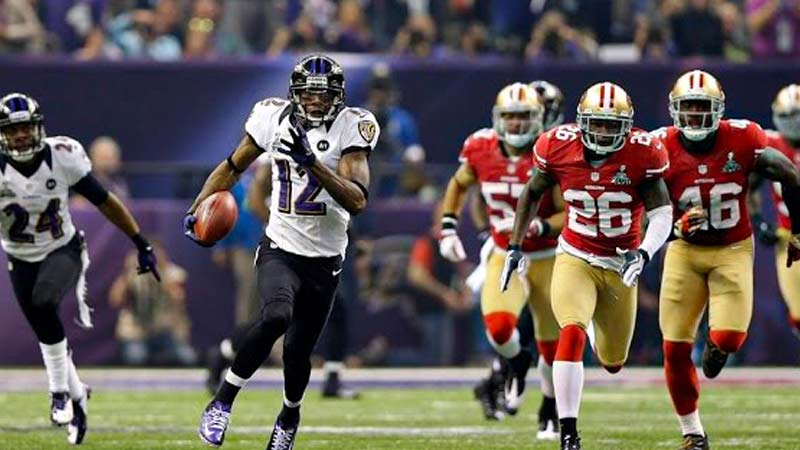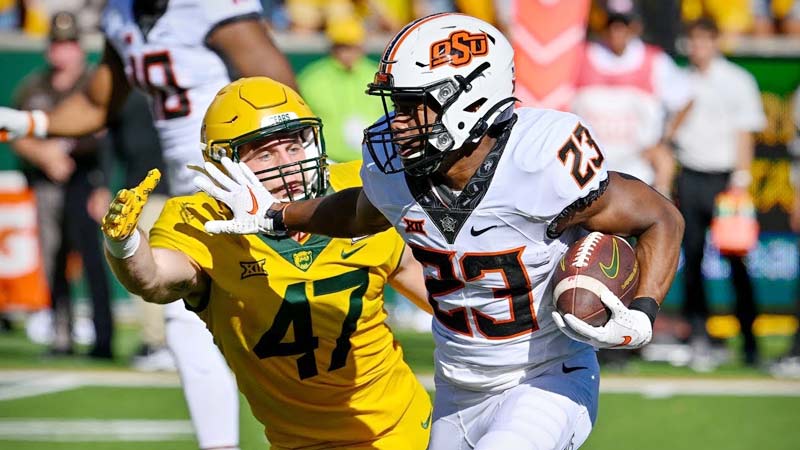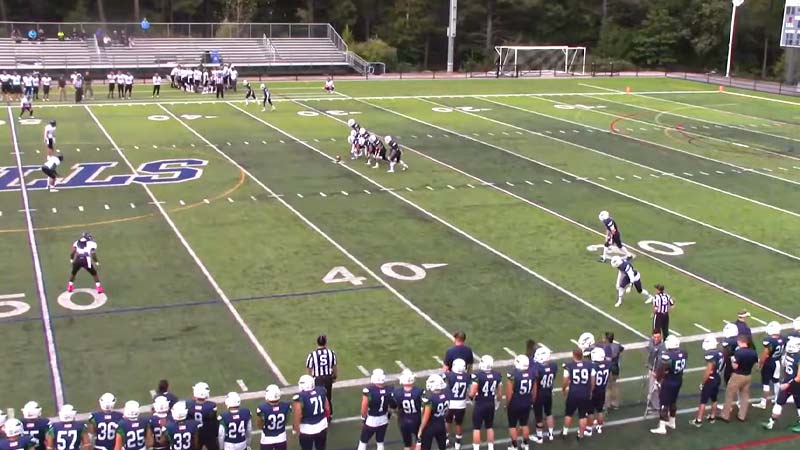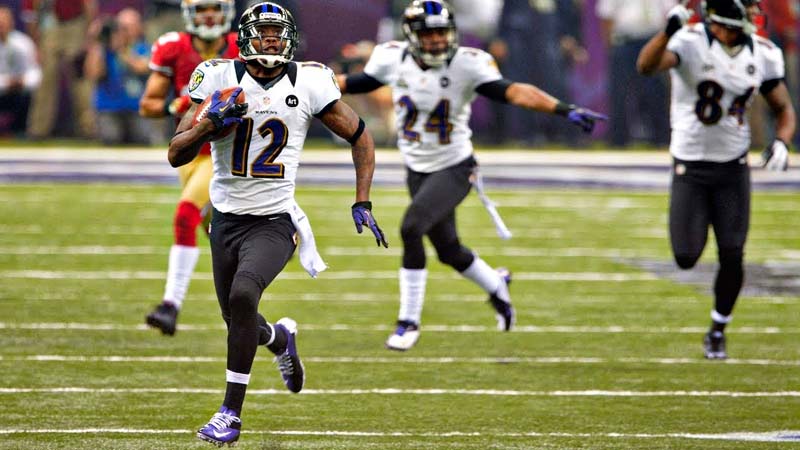Football is a game of strategy, athleticism, and excitement, and one of the most thrilling moments is when the ball is kicked and returned by skillful players.
In this blog post, we delve into the captivating realm of football kick returns and the rules that govern these dynamic plays. Whether it’s a kickoff return or a punt return, these actions have the potential to alter the course of a game, influencing field position, momentum, and strategy.
Let’s uncover the intricacies of kick returns and understand the rules that shape these game-changing moments.
What Is Football Kick Return?
A football kick return is a play in American football and Canadian football that occurs when the receiving team catches a kicked ball, usually a kickoff or a punt, and attempts to advance it as far as possible toward the opposing team’s end zone.
The primary goal of a kick return is to gain a favorable field position for the offensive team, giving them a shorter distance to travel to score a touchdown.
There are two main types of kick returns:
Kickoff Return
This occurs after a team scores points (usually a touchdown or a field goal). The team that was just scored against kicks the ball to the opposing team, and the receiving team attempts to catch the ball and return it as far as possible.
Kickoffs are typically used to start each half of the game and after a scoring play.
Punt Return
This happens after the offense fails to achieve a first down and decides to punt the ball to the opposing team. The receiving team’s player catches the punted ball and attempts to run it back up the field.
Punt returns are more common when the team is farther from their opponent’s end zone and is unlikely to attempt a field goal.
In both cases, the returner aims to evade the tackling attempts of the opposing team’s players while advancing as far down the field as possible. Successful kick returns can dramatically change the field position, providing the offensive team with a shorter distance to travel to score.
Sometimes, exceptional returners can even score touchdowns by successfully navigating through the opposing team’s coverage and reaching the end zone.
Kick returns require a combination of speed, agility, vision, and decisiveness on the part of the returner. Special teams units of each team are responsible for executing kick returns and kick coverage, making it a specialized aspect of the game separate from offense and defense.
What Are Football Kick Return Rules?

The rules governing football kick returns can vary between American football and Canadian football, as well as between different leagues and levels of play.
Here, I’ll provide a general overview of the rules for kick returns in American football, as it’s the more widely recognized version of the sport.
Touchbacks
If the receiving team catches the kickoff in the end zone and decides not to run it out, it’s called a touchback. In this case, the ball is placed at the receiving team’s 25-yard line.
Fair Catch
The returner has the option to signal for a fair catch by raising one hand above the head before catching the ball. This means that the returner cannot be tackled, and the receiving team gets the ball at the spot of the fair catch.
Out of Bounds
If the kicked ball goes out of bounds without being touched by the receiving team, it’s considered out of bounds, and the receiving team can choose to take the ball at the 25-yard line or have the kicking team re-kick.
Illegal Blocks and Interference
The return team cannot block below the waist, block in the back, or commit other forms of interference during the return. Penalties for these infractions can result in a loss of yardage.
Touching the Ball
If a member of the receiving team touches the kicked ball but does not gain possession, the ball is live, and either team can recover it. If the kicking team recovers the ball, they gain possession.
Yard Line Rules
The receiving team’s returner can return the ball as far as they can, but the goal is to advance the ball as close to the opponent’s end zone as possible without being tackled. The further the returner goes, the better the field position for the offense.
Blocking and Tackling
The coverage team (kicking team) tries to tackle the returner, while the return team tries to block defenders to create running lanes for the returner.
Illegal Touch
If a member of the kicking team touches the ball before it travels 10 yards from the kickoff, the receiving team can choose to take possession of the ball at the spot of the illegal touch.
Onside Kicks
In certain situations, the kicking team might attempt an onside kick, where they kick the ball a short distance and try to recover it themselves. Special rules apply to onside kicks to prevent early recovery attempts by the kicking team.
These rules are a general outline, and there might be additional or slightly different rules depending on the specific league or level of play. It’s important to consult the official rulebook of the relevant football league for the most accurate and up-to-date information on kick return rules.
Football Kick Return Rules in the NFL

In the NFL, football kick return rules govern the dynamic play where the receiving team catches a kicked ball, aiming to advance toward the opposing end zone.
On kickoff returns, the ball is kicked from the kicking team’s 35-yard line, while the receiving team starts from their end zone. If the ball isn’t caught cleanly, it’s a live ball.
Punt returns occur when the punting team kicks the ball to the receiving team after failing to make a first down. The returner aims to gain yardage, but rules limit blocking techniques to prevent dangerous collisions. Blocking fouls can result in penalties, impacting field position.
Fair catches, where the returner signals not to advance, are allowed on punt returns. New NFL rules emphasize player safety, reducing high-speed collisions, and enhancing fair play during kick returns.
Kickoff and Punts in Football Kick Return
In American football, kickoffs and punts are the two main types of plays involved in football kick returns.
Kickoff
A kickoff is the method used to start the game, the second half, and after a scoring play (touchdown or field goal). The ball is placed on a kicking tee at the kicking team’s 35-yard line.
The kicker aims to kick the ball as far down the field as possible to the receiving team. Once caught by the receiving team’s player, the returner attempts to advance the ball up the field while avoiding tacklers.
The receiving team’s possession begins when the returner is tackled or steps out of bounds.
Punt
A punt occurs when a team on offense decides to punt the ball to the opposing team on fourth down, typically when they are unable to gain a first down. The punting team’s goal is to kick the ball high and deep to force the receiving team to start their possession farther from the punting team’s end zone.
The receiving team’s player, known as the punt returner, catches the punted ball and attempts to return it for yardage. Fair catch signals can be used by the returner to avoid being tackled immediately, allowing them an unopposed catch.
Both kickoff and punt returns require skillful coordination between the returner and their blockers, as well as quick decision-making to navigate through the coverage and gain valuable yardage.
Special teams units are dedicated to executing successful returns and coverage while adhering to the rules and regulations of the game.
Players Positions in Football Kick Return

In football kick returns, the positions and roles of players vary based on whether it’s a kickoff return or a punt return. Here’s a general overview of the key positions involved in both types of returns:
Kickoff Return
- Returner: This player’s primary role is to catch the kicked ball and run it back up the field. They need to be agile, quick, and have good vision to navigate through defenders.
- Upbacks/Blockers: These players line up closer to the returner and are responsible for blocking and creating running lanes for the returner. They also serve as backup options to catch the ball if the returner misses it.
- Wedge Blockers: Positioned a bit farther upfield, wedge blockers create a protective formation to shield the returner from oncoming defenders.
- Gunners: These players are usually the fastest on the special teams unit. They line up wide and sprint down the field to tackle the returner, often being the first to reach them.
- Kick Coverage Team: Comprising players from the kicking team, their main job is to sprint downfield to tackle the returner as quickly as possible.
Punt Return
- Punt Returner: Similar to the kickoff returner, their primary role is to catch the punted ball and attempt to advance it while avoiding tacklers. They need good catching skills and agility.
- Gunners: In punt returns, gunners are key players who sprint down the field to tackle the punt returner. They are often challenged by blockers trying to impede their progress.
- Blockers: These players make up the punt return team’s front line and aim to protect the returner by blocking incoming defenders. They also create lanes for the returner to exploit.
- Upbacks: Positioned closer to the line of scrimmage, upbacks provide additional protection for the returner and might catch the punt if the returner decides not to.
- Punt Coverage Team: Comprising players from the punting team, their goal is to get downfield quickly and limit the returner’s yardage by tackling them. Both kickoff and punt return plays require coordination, timing, and specialized skills to create successful returns and prevent the opposing team from gaining a favorable field position.
Impact of Football Kick Return
Football kick returns have a significant impact on the game due to their potential to change field position and momentum. Here are some key impacts of football kick returns:
Field Position
Successful kick returns can give the receiving team better-starting field position for their offensive drive. This means they have a shorter distance to travel to score points, making it easier to achieve a touchdown or field goal.
Momentum Shift
A dynamic kick return, especially for a touchdown, can swing the momentum of the game in favor of the returning team. Scoring on a kick return energizes the team and its fans, potentially demoralizing the kicking team.
Game Strategy
A strong kick return can influence a team’s offensive strategy. A good field position might encourage riskier plays, while a poor field position might lead to more conservative play-calling.
Time Management
A longer kick return can save time for the offense by reducing the time needed to drive down the field. This can be crucial when the game is in its closing moments and the trailing team needs to score quickly.
Special Teams Significance
Special teams play a vital role in kick returns. Players who excel in these situations are often valued for their versatility and ability to impact multiple aspects of the game.
Pressure on the Kicking Team
Poor kick coverage can put the kicking team’s defense in a tough position, having to defend against a shorter field. This can result in the opposing offense having a greater chance of scoring.
Risk and Reward
While kick returns offer the potential for big gains, they also carry risks. A fumble or a tackle deep in the returner’s territory could result in the opposing team getting an excellent field position.
Player Recognition
Skilled returners who consistently perform well gain recognition and can become fan favorites. They add excitement to the game with their agility, speed, and ability to break tackles.
Football kick returns are a dynamic aspect of the game that can influence field position, momentum, and strategies for both teams. They showcase the athleticism and versatility of players and can turn the tide of a game in an instant.
FAQs
What is a football kick return?
A football kick return occurs when the receiving team catches a kicked ball, either from a kickoff or a punt, and aims to advance the ball as far as possible toward the opposing team’s end zone.
It’s a high-stakes play that can significantly impact field position and momentum.
How does a kickoff return differ from a punt return?
A kickoff return happens at the start of each half and after scoring plays. The receiving team catches a kicked ball following a score, while a punt return occurs after a team fails to achieve a first down and decides to punt the ball.
The punt returner catches the punted ball and tries to gain yardage.
What positions are involved in kick returns?
In kickoff returns, you’ll find positions like the returner, upbacks/blockers, wedge blockers, gunners, and members of the kick coverage team.
For punt returns, there are the punt returner, gunners, blockers, upbacks, and punt coverage team members, each with specific roles to execute.
What are the key rules for kick returns?
Rules for kick returns ensure fair play and safety. Players must avoid illegal blocking techniques that can lead to penalties.
Fair catches are allowed in punt returns, allowing the returner to signal that they won’t advance the ball to avoid immediate tackles.
How do kick returns impact the game?
Kick returns influence field position, momentum, and game strategies. A successful return can provide the offensive team with a better starting position, and swing momentum, and even result in quick scores.
They add an electrifying element to the game, showcasing players’ agility and decision-making skills.
Wrapping Up
Football kick returns are much more than just plays in a game; they’re moments of anticipation and exhilaration that can shift the balance of power.
Understanding the rules and appreciating the positions involved in kick returns allows us to fully grasp the intricacies of these game-altering actions.
As we continue to watch the game unfold, let’s not overlook the impact of those breathtaking kick-return plays that keep fans on the edge of their seats.
Thank you for your time.







